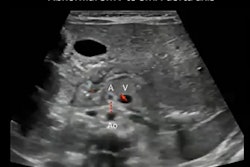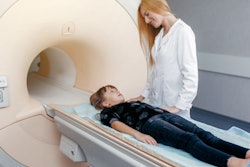
Although ultrasound is said to be an operator-dependent modality, researchers found that any differences in technique between radiologists and sonographers in scanning children presenting with suspected acute appendicitis did not translate into changes in clinical outcomes, according to research published April 29 in the Journal of the American College of Radiology.
In a study led by Dr. Leah Gilligan from Northwestern University in Illinois, researchers found that differences between radiologists and sonographers did not lead to clinically important outcomes in children undergoing ultrasound for suspected acute appendicitis. This also includes hospital readmission, surgical consultation, and appendectomy performance.
The team noted that this could also be because clinical care pathways could be sufficiently robust and that deviations in the performance of sonographers or radiologists are corrected by redundant safety nets.
"In other words, although sonographers and radiologists are known to vary in performance and interpretation skill, those differences do not seem to translate into meaningful differences in major clinical care outcomes for this indication," Gilligan colleagues wrote.
The team analyzed 9,283 appendix ultrasound scans with a mean patient age of 9.9 years; 58.2% of the patients were boys. For the study, ultrasound scans were performed by 31 sonographers and interpreted by another 31 radiologists.
The group found no statistically significant difference in outcomes between sonographers and radiologists. For example, children had the same appendectomy rate (20.3%) for both sonographers and radiologists, while the hospital admission frequency was also similar: 34% for sonographers and 33.5% for radiologists.
Despite the differences between sonographers and radiologists not being statistically significant, numerous other clinical and system factors do seem to be associated with these outcomes, the researchers found. Some of these were anticipated, such as ultrasound report impression, degree of abdominal tenderness, and white blood cell count.
One unanticipated factor that researchers noted was whether or not imaging was performed at the main hospital versus a satellite hospital.
They found that presentation to the satellite emergency department was associated with a decreased odds of hospital admission and surgical consultation, as well as an increased odds of hospital readmission within 30 days after adjusting for numerous clinical variables and system factors. The satellite hospital is staffed by the same sonographers and radiologists that work at the main hospital.
"As our study was not primarily designed to specifically investigate the impact of the location of imaging, the exact cause of these differences is unknown," they said.
The team also showed that assessing differences "probably" should not be used as a meaningful quality indicator in radiology department members performing and interpreting appendix ultrasound.
These results are potentially important because appendix ultrasound is widely performed and is a first-line test for suspected appendicitis at most dedicated pediatric hospitals, Gilligan and et al wrote.




















